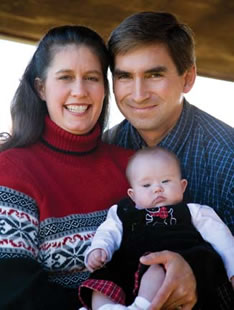It’s said that important events happen in threes. For Emaline, this statement truly goes to the heart of things—specifically, her heart.

Emily was born with three heart defects: a restricted pulmonary valve that reduced the blood flow to one lung to a trickle, a hole between the left and right ventricles and a flap over the aorta. The most critical problem was the restriction of the pulmonary valve. It cut her blood oxygen saturation to as low as 46. Normal saturation is 100.
When Cindy gave birth to her daughter after three and a half days of labor, which began during the funeral for her husband Bill’s mother, Emaline seemed fine. Bill was there, and the family was beginning to gather, when the neonatal team at the hospital asked to run a few more tests. Emaline’s color wasn’t quite what they’d like, they said. A little later, the defects were confirmed. Surgery would be necessary, but Emaline would need to double her body weight first.
She wouldn’t have time to build her strength. By Labor Day, when she was just a little more than two months old, she had to have surgery. Bill and Cindy waited through the night at Children’s Mercy Hospital in Kansas City, Missouri. The next morning, Emaline was second on the surgery schedule. She would have a shunt inserted to move more blood to her lung. Full repair of the restricted valve and the hole between the left and right ventricles would have to wait for another surgery sometime the following spring.
At one point during the morning of Emaline’s surgery, a hospital representative approached Bill and Cindy.The Kansas City Star and the Community Blood Center were working together to show the public what happens to a pint of donated blood, she said. Would Bill and Cindy mind if Emaline received that pint? They agreed, and that pint became part of Emaline’s story.
Bill, who is a frequent blood donor, says his daughter’s experience has brought something home to him. “The surgeon and the medical staff are so important,” he says. “They go through so many years of training to get to this level. And there’s so much money invested in equipment to help people like Emaline. But if it weren’t for the blood donor, it would go for nothing. The importance of a blood donor is no less important than the skills and performance of the surgeon.”
